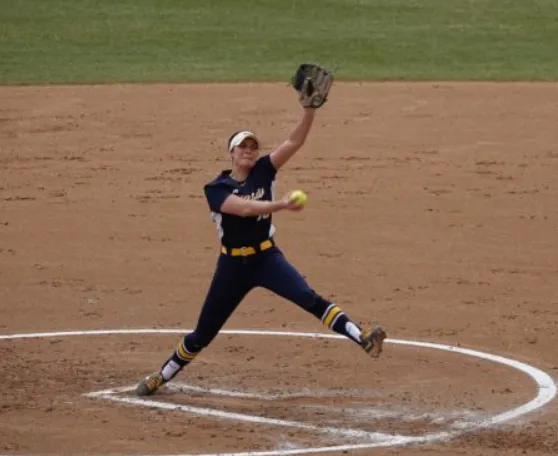Softball may look the same at first glance, but fast pitch and slow pitch are two very different versions of the game. Each has its own rhythm, skill demands, and style of play. Fast pitch is the choice for competitive athletes, while slow pitch tends to attract recreational players who enjoy a more social, relaxed environment. Let’s take a closer look at what separates these two formats.
Pitching Style
The most obvious difference lies in how the ball is thrown.
Fast Pitch: The pitcher uses a powerful underhand “windmill” motion, releasing the ball with speed and spin. This technique allows for sharp movement—rise balls, drop balls, and curves—that make hitting a serious challenge.
Slow Pitch: The delivery is completely different. The ball is tossed in a high, looping arc—usually between 6 and 12 feet above the ground—aimed to drop gently through the strike zone. The slower speed gives batters more time to react and adjust their swing.
Pitching Speed
As the names suggest, speed plays a defining role.
Fast Pitch: Speeds can exceed 60–70 mph at higher levels, leaving hitters only fractions of a second to make contact.
Slow Pitch: In contrast, pitches come in much slower, focusing on placement rather than power. Accuracy and consistency are more important than speed.
Hitting Experience
The difference in pitching style changes everything for hitters.
Fast Pitch: Batters need quick reflexes, strong hand-eye coordination, and the ability to handle movement and speed. A single at-bat can test both mental and physical readiness.
Slow Pitch: Hitting is generally easier. Because the ball travels slower and on a predictable path, players can take their time and focus on solid contact, making it great for casual or mixed-skill games.
Pace of Play
The game’s tempo also distinguishes the two.
Fast Pitch: Every play happens quickly—from pitch to swing to fielding. The game demands sharp focus, quick transitions, and constant awareness.
Slow Pitch: The pace is more relaxed, with a social atmosphere. It’s ideal for recreational leagues and players who want to enjoy the camaraderie of the sport without the intense pressure.
Strategy and Skill Focus
The strategies used in each version reflect the pace and complexity of the game.
Fast Pitch: Coaches and players rely on precise pitching, aggressive base running, and tactical hitting. Small-ball strategies like bunting and stealing bases are common.
Slow Pitch: The emphasis shifts to defense and smart positioning. Because everyone has a better chance to hit the ball, fielders must stay alert. Offensively, teams focus on placement hitting and teamwork rather than speed or power alone.
Equipment and Field
While the basic gear—bats, gloves, and balls—looks similar, leagues may have slight rule-based variations. Field dimensions typically stay the same, but the game’s tempo can make the field “feel” different depending on whether it’s fast or slow pitch.
The Overall Experience
Both fast pitch and slow pitch have their own appeal. Fast pitch softball delivers the thrill of competition, speed, and precision—a perfect match for athletes seeking a challenge. Slow pitch, on the other hand, emphasizes fun, teamwork, and participation, making it ideal for casual players or community leagues.
No matter which version you prefer, both celebrate the spirit of the game—one through the rush of high-speed competition, and the other through the joy of playing for the love of it.












